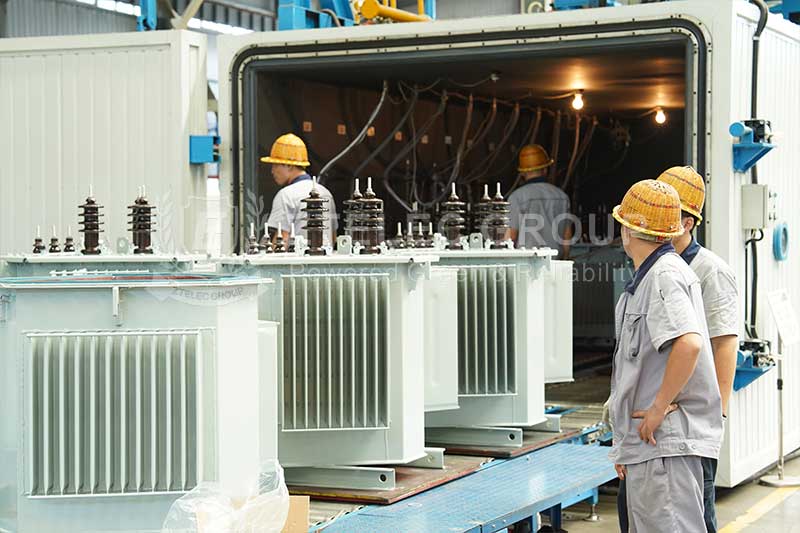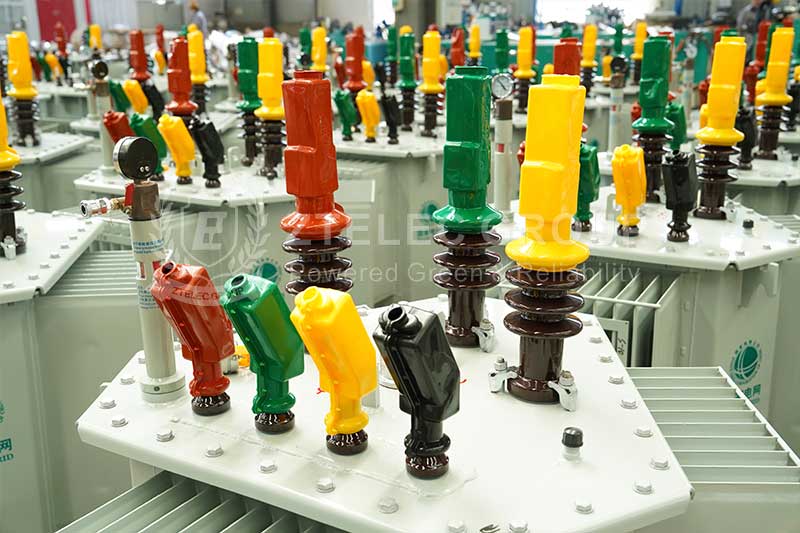Main Components and Detailed Specifications of Oil-immersed Transformers
As an important piece of electrical equipment, oil-immersed transformers play a crucial role in electricity transmission and distribution systems. Their primary function is to convert voltage from one level to another to meet various electricity demands. An in-depth analysis of the main components and detailed specifications of oil-immersed transformers can enhance our understanding of their operating principles and application scenarios.

Ⅰ.What are the main components of oil-immersed transformers?
Oil-immersed transformers are mainly composed of the following key components:
1. Transformer Core
The core is the central part of the transformer, typically made up of laminated silicon steel sheets, which have good magnetic permeability. The core's function is to provide a low magnetic resistance path for the flow of magnetic flux, reducing magnetic losses. The design and material selection of the core directly affect the efficiency and performance of the transformer.
2. Transformer Windings
The windings are made from conductive materials (such as copper or aluminum) and are divided into high-voltage and low-voltage windings. The high-voltage winding is used for input voltage, while the low-voltage winding converts electrical energy into a voltage level suitable for user consumption. The design of the windings must consider current density, insulation class, and heat dissipation capability to ensure the safe operation of the transformer.
3. Transformer Insulating Oil
Insulating oil serves not only as insulation but also as a coolant and flame retardant. Mineral oil or synthetic oil is commonly used, with the insulation performance and thermal stability being key factors in the selection. The quality of the insulating oil determines the lifespan and safety of the transformer.
4. Transformer Oil Tank
The oil tank is designed to hold the insulating oil, ensuring effective dissipation of heat generated within the transformer. The structure of the oil tank is typically made from steel, with characteristics such as corrosion resistance and pressure resistance, equipped with pressure relief devices to prevent failures due to excessively high internal pressure.
5. Transformer Cooling System
Oil-immersed transformers need to maintain an appropriate operating temperature and are usually equipped with either natural cooling or forced cooling devices. Natural cooling dissipates heat through thermal convection, while forced cooling may involve mechanical devices such as cooling fans to enhance heat dissipation efficiency.
6. Protective Devices
To ensure the safe operation of the transformer, a range of protective devices is typically installed, including overload protection, short circuit protection, and temperature monitoring equipment. These devices help ensure that power is cut off promptly in the event of a fault, preventing damage to the equipment.

Ⅱ.Detailed Specifications of Oil-immersed Transformers:
When selecting oil-immersed transformers, detailed specifications are critically important. Here are some key technical parameters:
1. Rated Power
The rated power of a transformer is typically expressed in kilovolt-amperes (kVA), representing the maximum load capacity it can handle under normal operating conditions. Choosing a transformer with an appropriate rated power based on electricity demand is essential.
2. Rated Voltage
The rated voltage refers to the design voltage on both the high-voltage and low-voltage sides of the transformer. Selecting the appropriate rated voltage is fundamental to ensuring the stable operation of the power system.
3. Rated Frequency
Transformers are typically designed for specific operating frequencies, such as 50 Hz or 60 Hz. When selecting a transformer, it is important to ensure that its frequency matches that of the power system.
4. Insulation Class
The insulation class is usually categorized according to standards set by the International Electrotechnical Commission (IEC), relating to the transformer’s reliability under high temperature and humidity conditions. Common insulation classes include Class A, B, F, and H, with higher classes indicating better temperature resistance.
5. Transformation Ratio
The transformation ratio is the relationship between the high-voltage and low-voltage sides of the transformer. It directly affects the output voltage of the transformer, and a well-designed transformation ratio can effectively meet actual electricity demands.
6. Load Losses and No-load Losses
Load losses refer to the energy losses in the transformer caused by the current flowing through the windings at rated load. No-load losses refer to the energy losses incurred when the transformer is not loaded, stemming from the presence of the magnetic flux. A reasonable assessment of these two losses can help improve the overall economy and energy efficiency of the transformer.
As a key device in power systems, the main components and detailed specifications of oil-immersed transformers have a direct impact on their performance and stability. By thoroughly understanding the core, windings, insulating oil, oil tank, cooling system, and protective devices, along with accurately grasping rated power, voltage, frequency, insulation class, transformation ratio, and losses, one can effectively guide the selection, design, and application of transformers, thus enhancing the efficiency and safety of electricity transmission and distribution. In the future development of power systems, oil-immersed transformers will continue to play an important role in fields such as renewable energy and smart grids, promoting the sustainable development of the electricity industry.
- more+releated article
- 2025-12-13How to Select and Use Phenolic Cloth-base Lami
- 2025-12-13How Much Does Bakelite Sheet Cost? 2025 Price
- 2025-12-13Why are most 3240 epoxy boards yellow?
- 2025-12-13What are the Main Applications of FR4 Epoxy Bo
- 2025-12-13Why Does the Price of Insulating Paperboard Va
- 2025-12-13Heat-Resistant DDP Insulation Paper
- 2025-12-13Comparison of Heat-Resistant DDP Insulating Pa
- 2025-12-13G10 and FR4 Epoxy Boards: Commonly Used for Ge
- 2025-12-13The Price of Heat-Resistant DDP Insulation Pap
- 2025-12-13How to Choose Epoxy Laminate Materials for Gen





